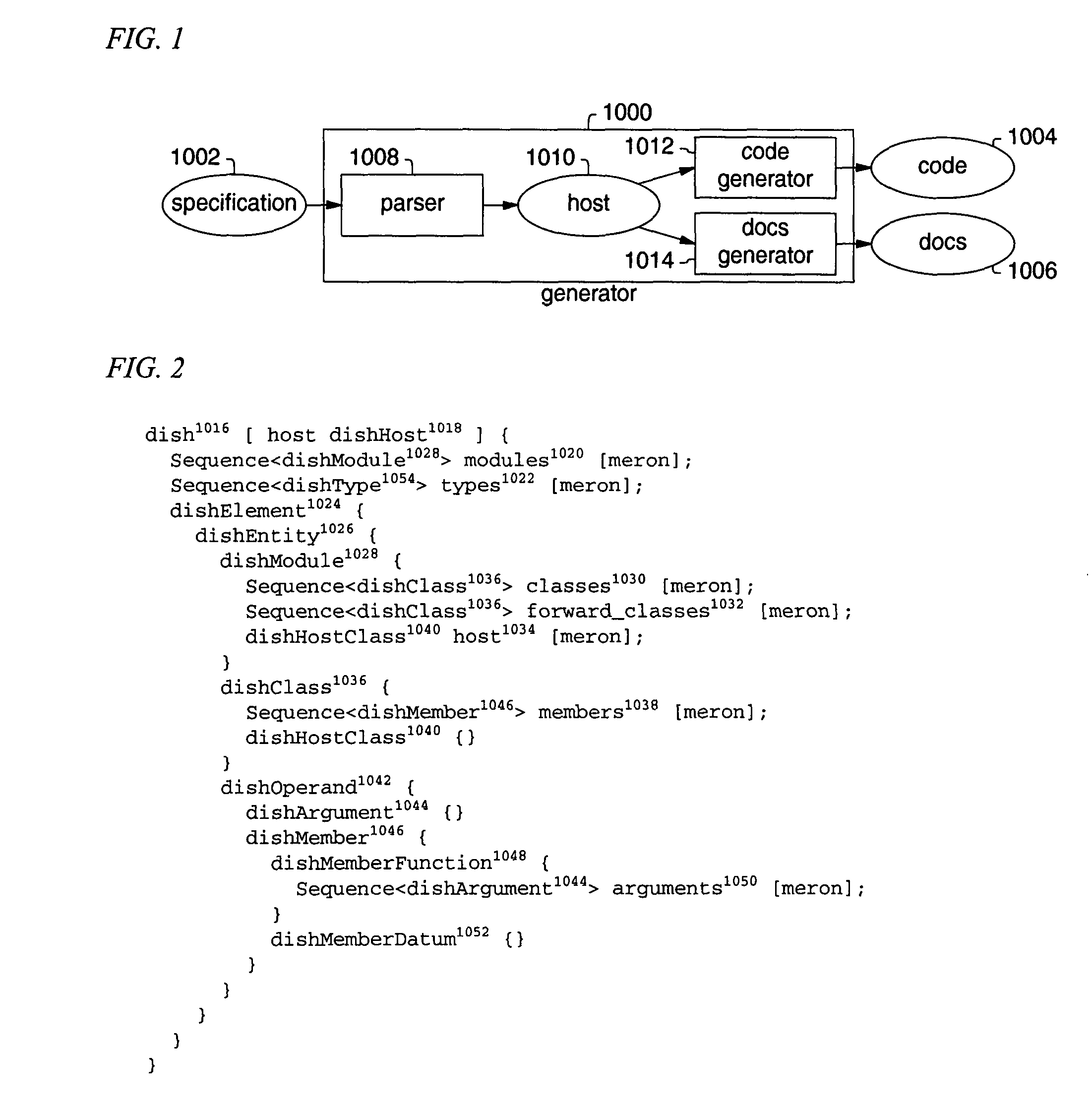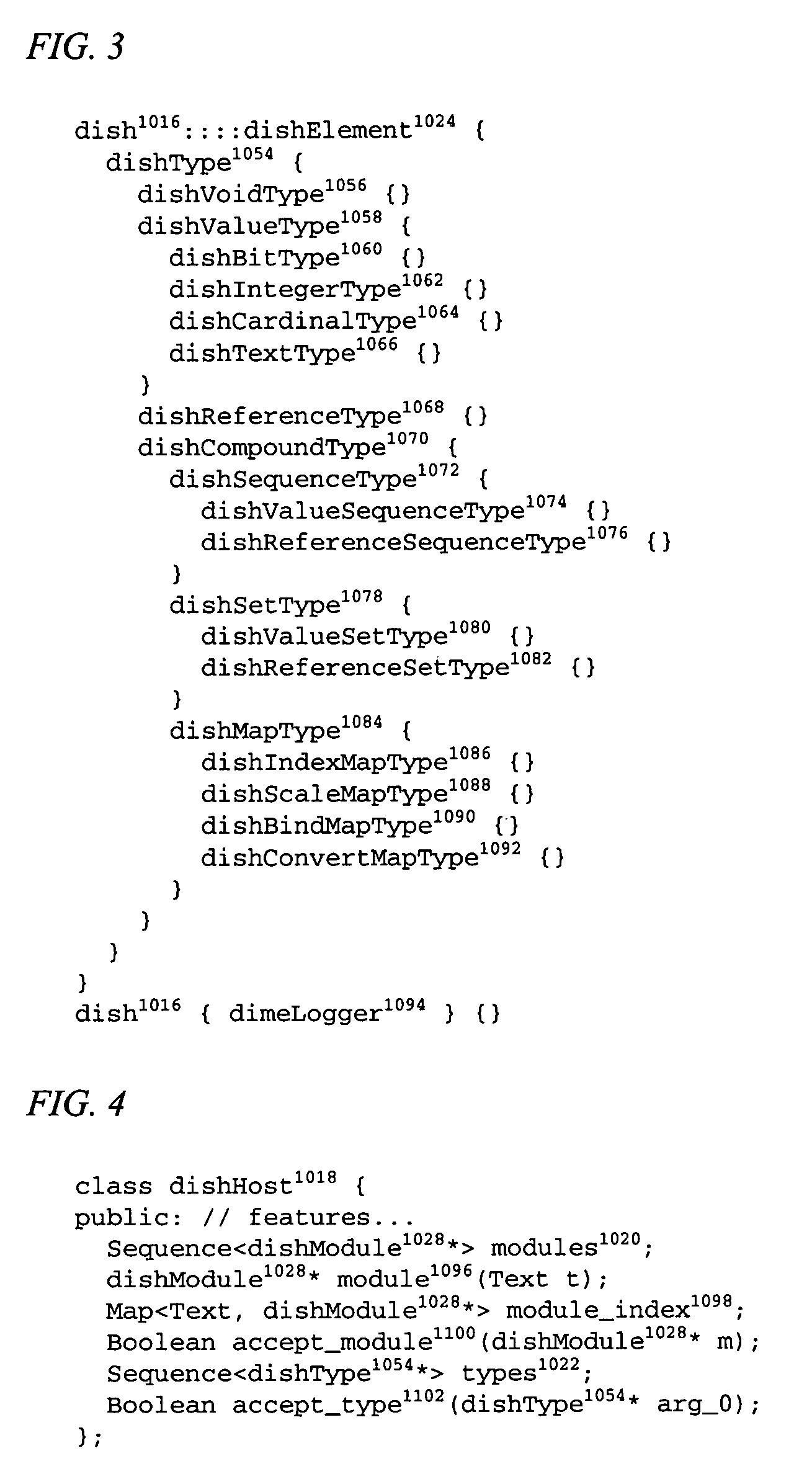Module specification language and meta-module
a module specification and module technology, applied in the field of object-oriented programming specification of modules, can solve the problems of inconvenient automatic processing, inability to attend to a vast collection of details, and inability to easily obscure and complicate large-scale considerations of interactions between program elements,
- Summary
- Abstract
- Description
- Claims
- Application Information
AI Technical Summary
Benefits of technology
Problems solved by technology
Method used
Image
Examples
Embodiment Construction
1 Terminology
[0060]The present invention concerns the specification of object-oriented modules. An object-oriented module, or, more simply, a module, is defined as a collection of interrelated object-oriented classes. Specification is a human-oriented activity by which the characteristics of a module may be conveniently expressed. This invention uses textual expressions for specification of modules. Textual expression are easily prepared. When such expressions are consistent with a formal grammar, they are also easily processed to construct object-oriented data structures, which are convenient to produce module definitions and other useful products.
[0061]The interrelated classes in a module may be usefully divided into categorical classes and unitary classes. A categorical class corresponds to a category in a domain-specific model. Thus categorical classes are largely determined by the requirements of the domain to which applications of the specified module are directed. Instances o...
PUM
 Login to View More
Login to View More Abstract
Description
Claims
Application Information
 Login to View More
Login to View More - R&D
- Intellectual Property
- Life Sciences
- Materials
- Tech Scout
- Unparalleled Data Quality
- Higher Quality Content
- 60% Fewer Hallucinations
Browse by: Latest US Patents, China's latest patents, Technical Efficacy Thesaurus, Application Domain, Technology Topic, Popular Technical Reports.
© 2025 PatSnap. All rights reserved.Legal|Privacy policy|Modern Slavery Act Transparency Statement|Sitemap|About US| Contact US: help@patsnap.com



